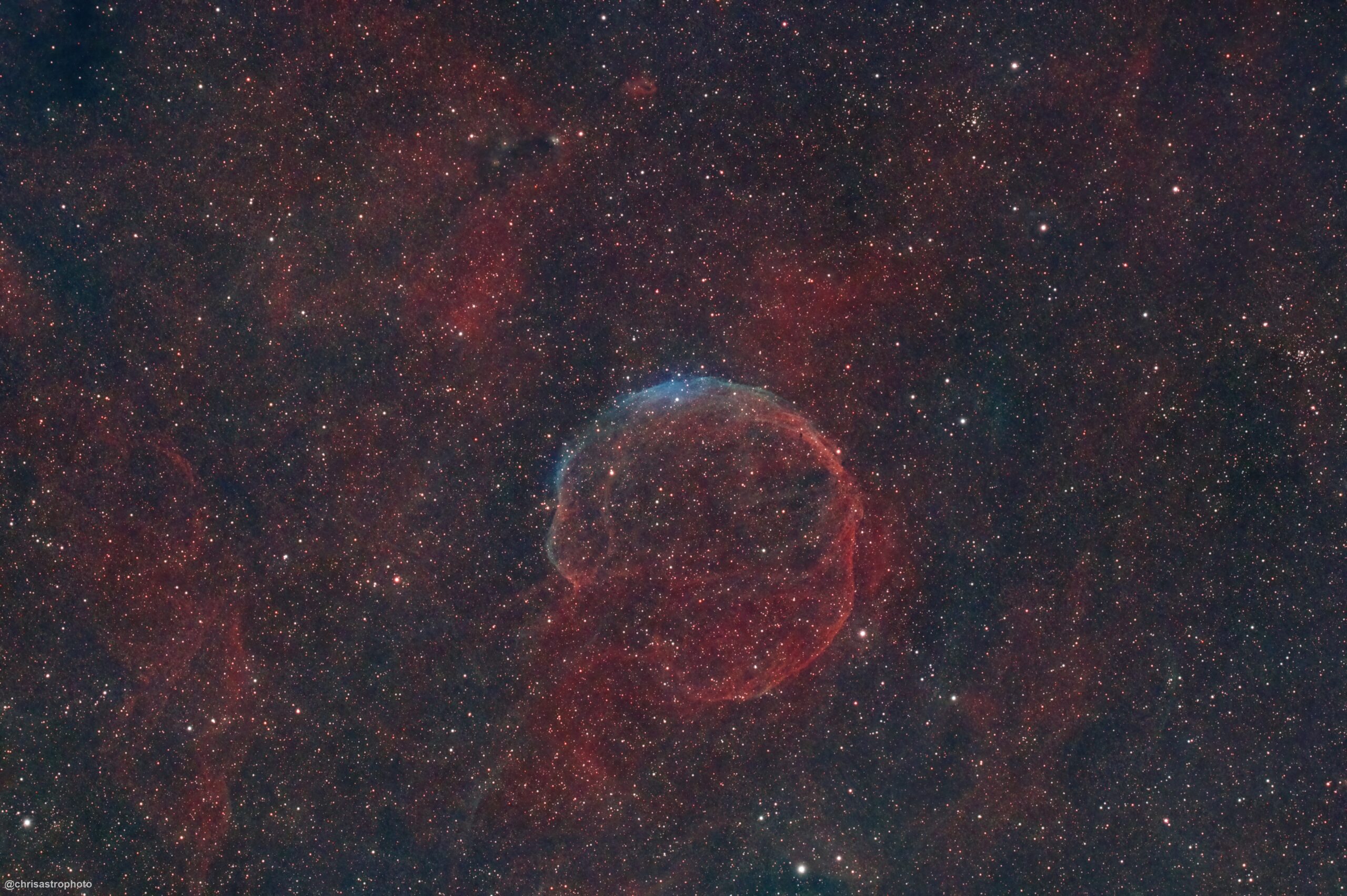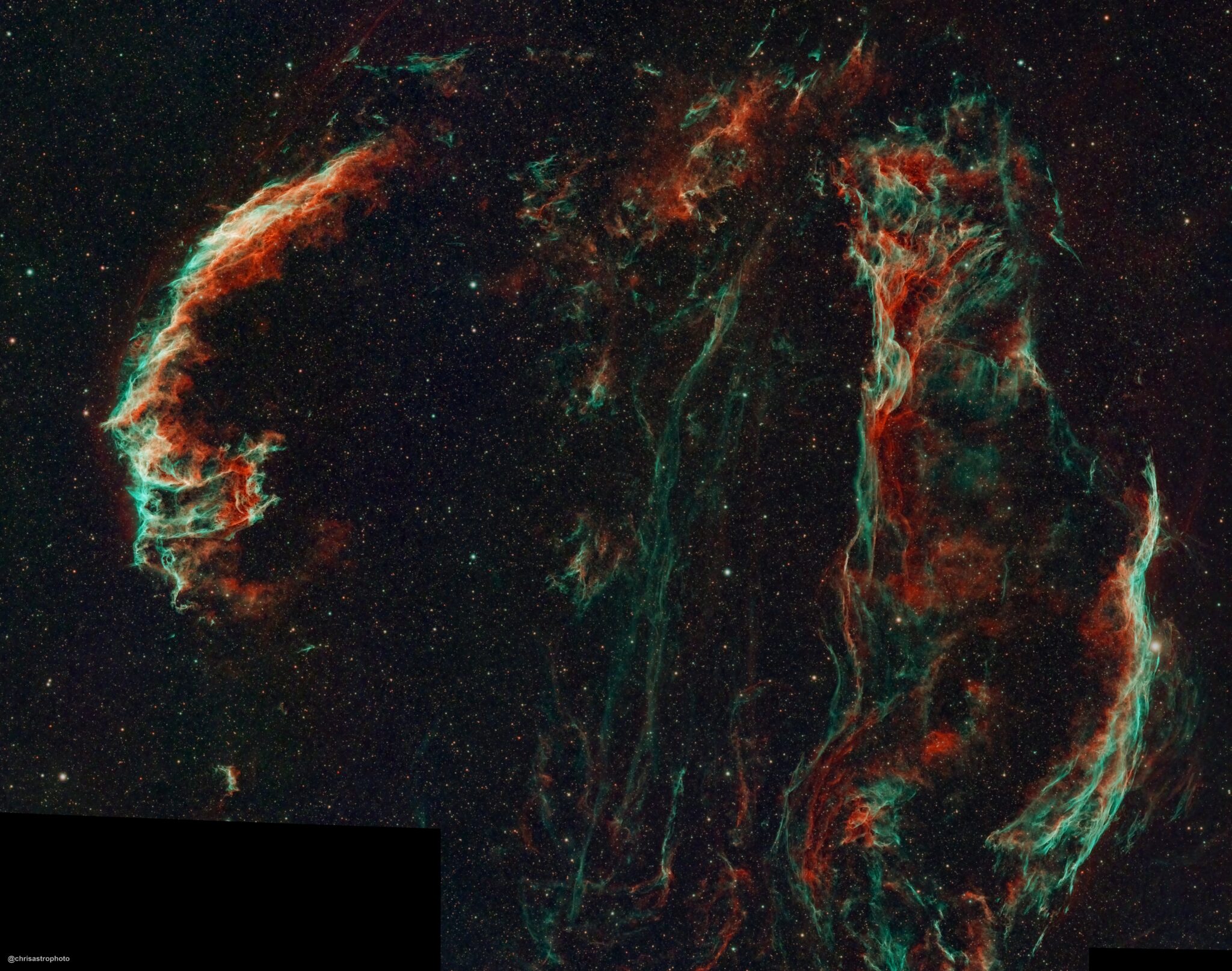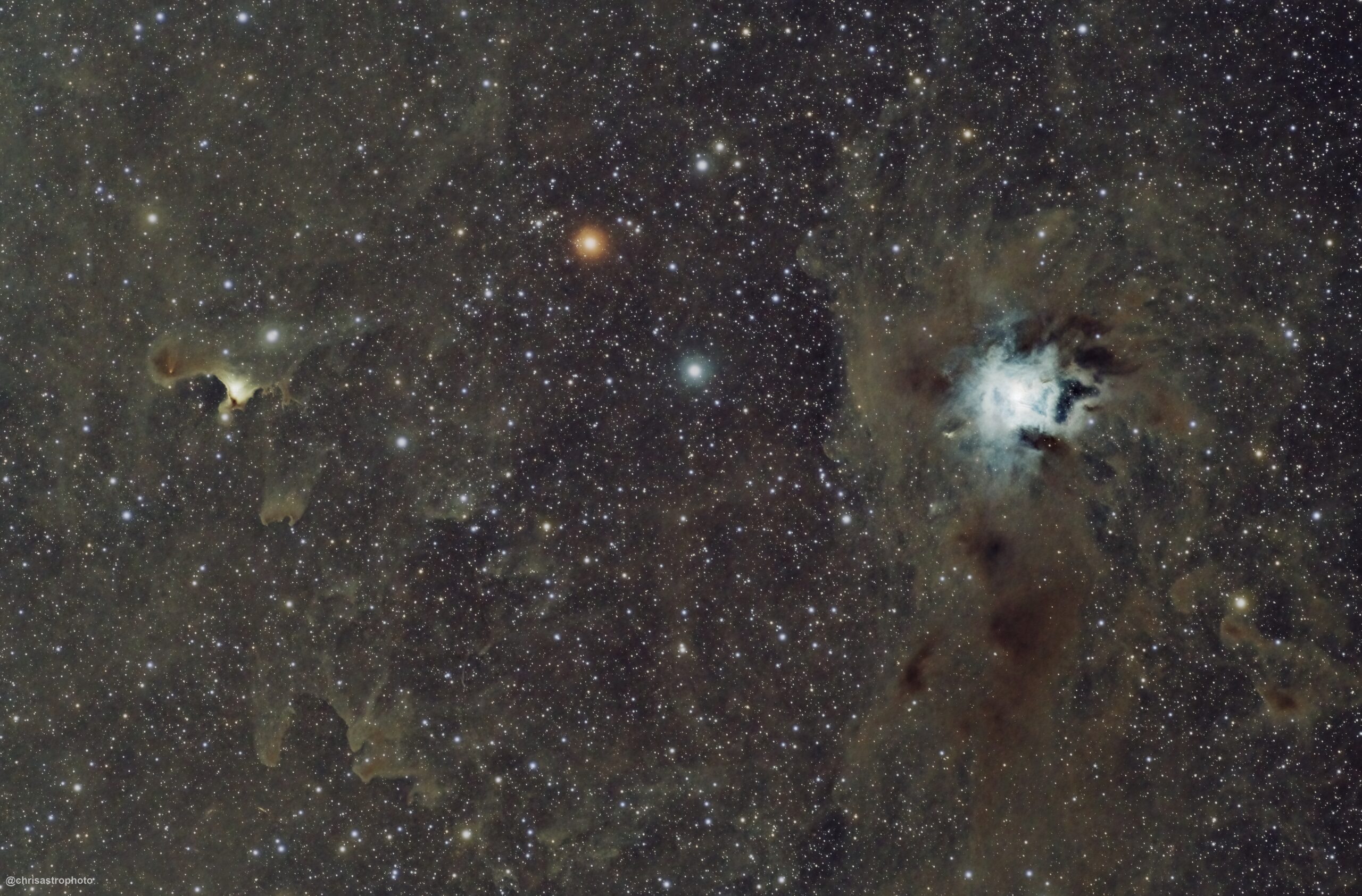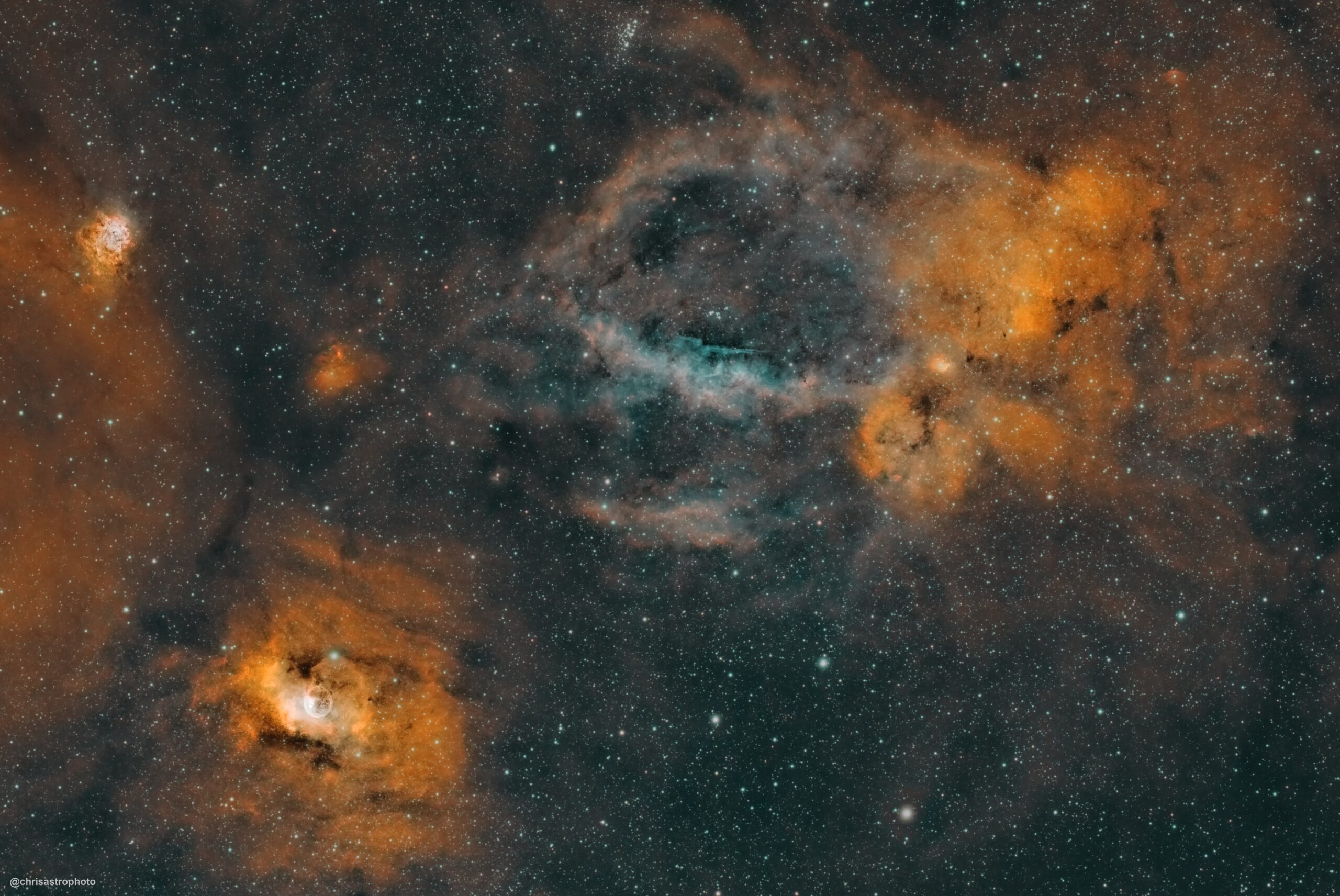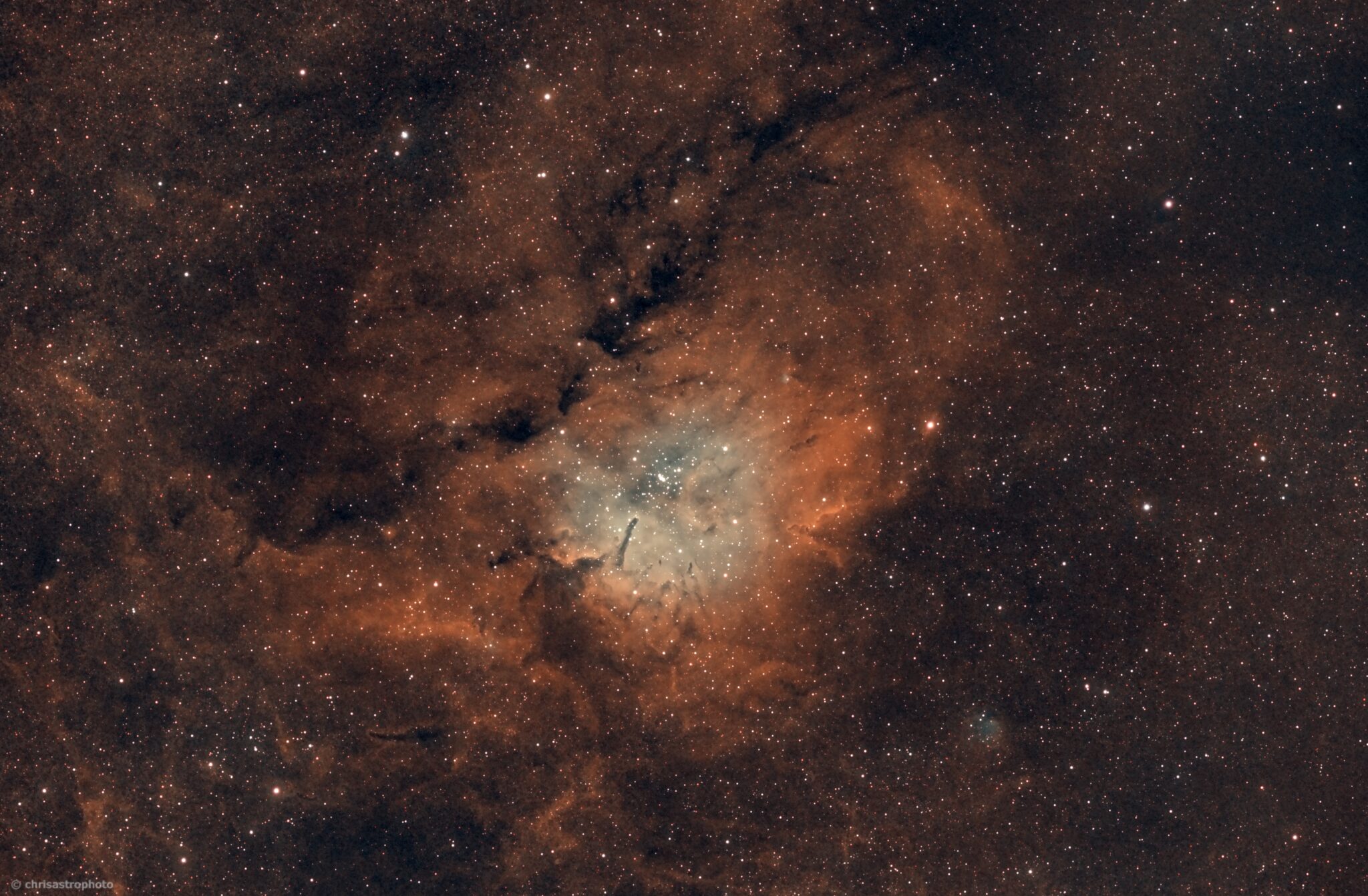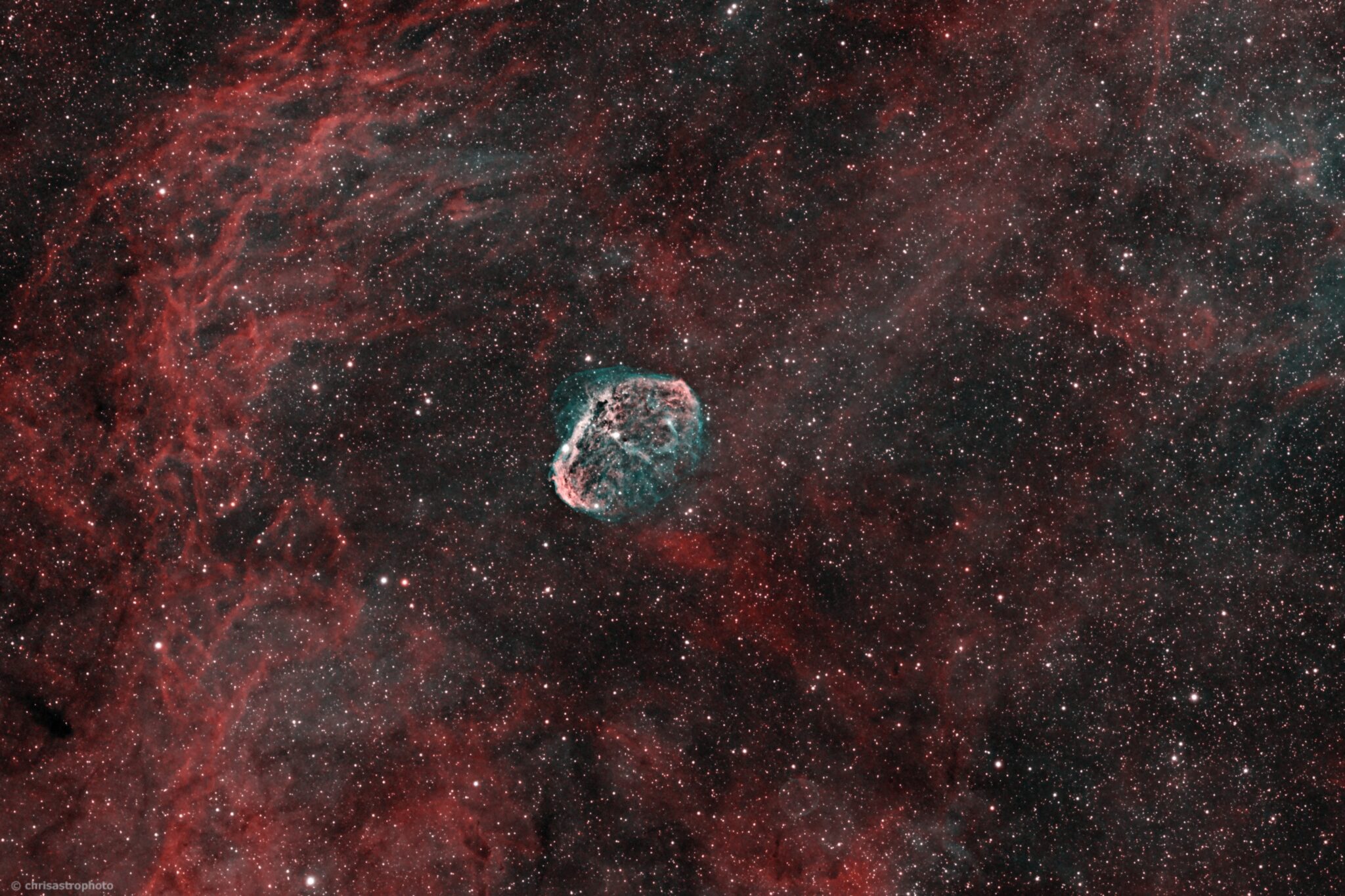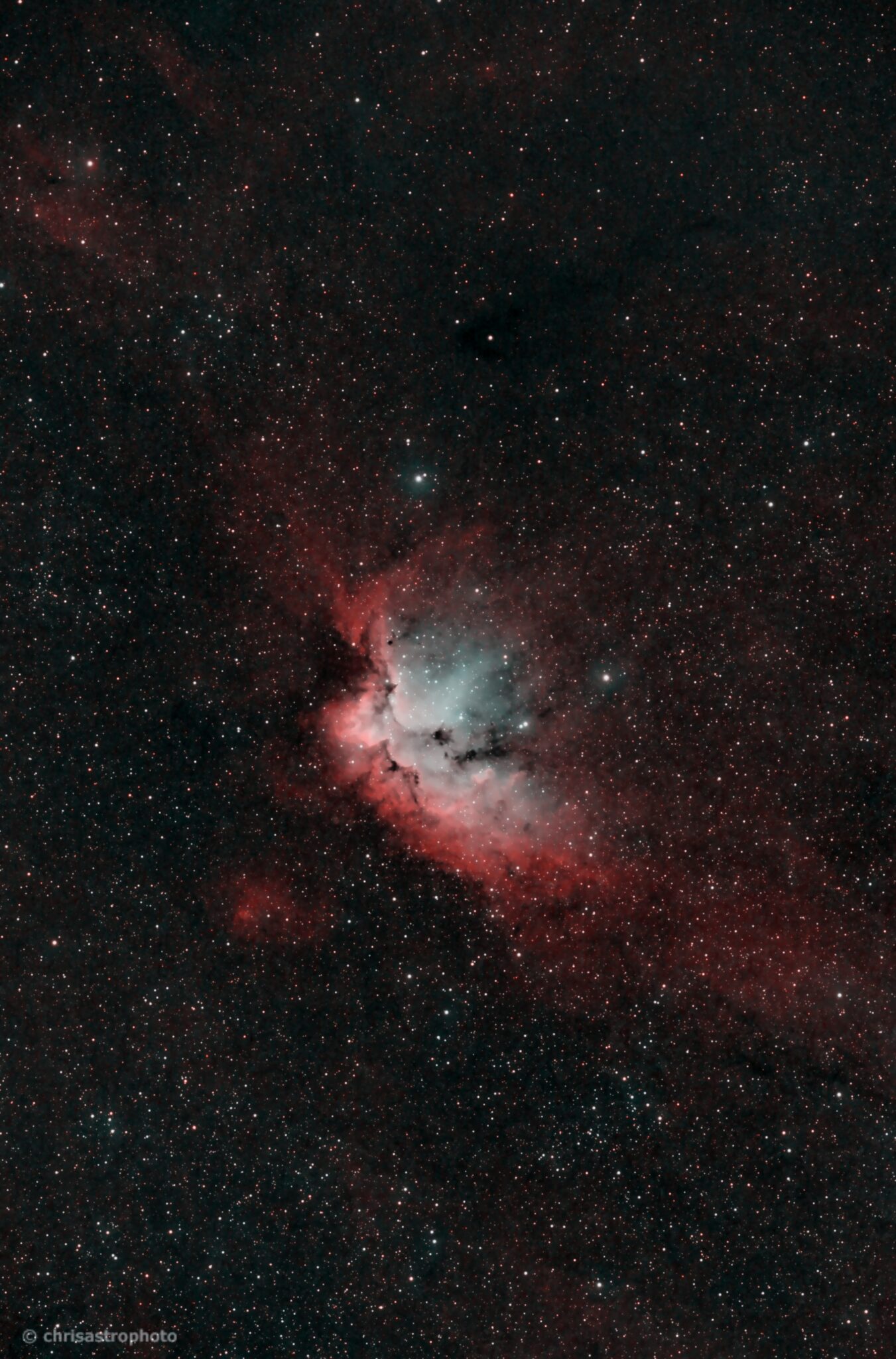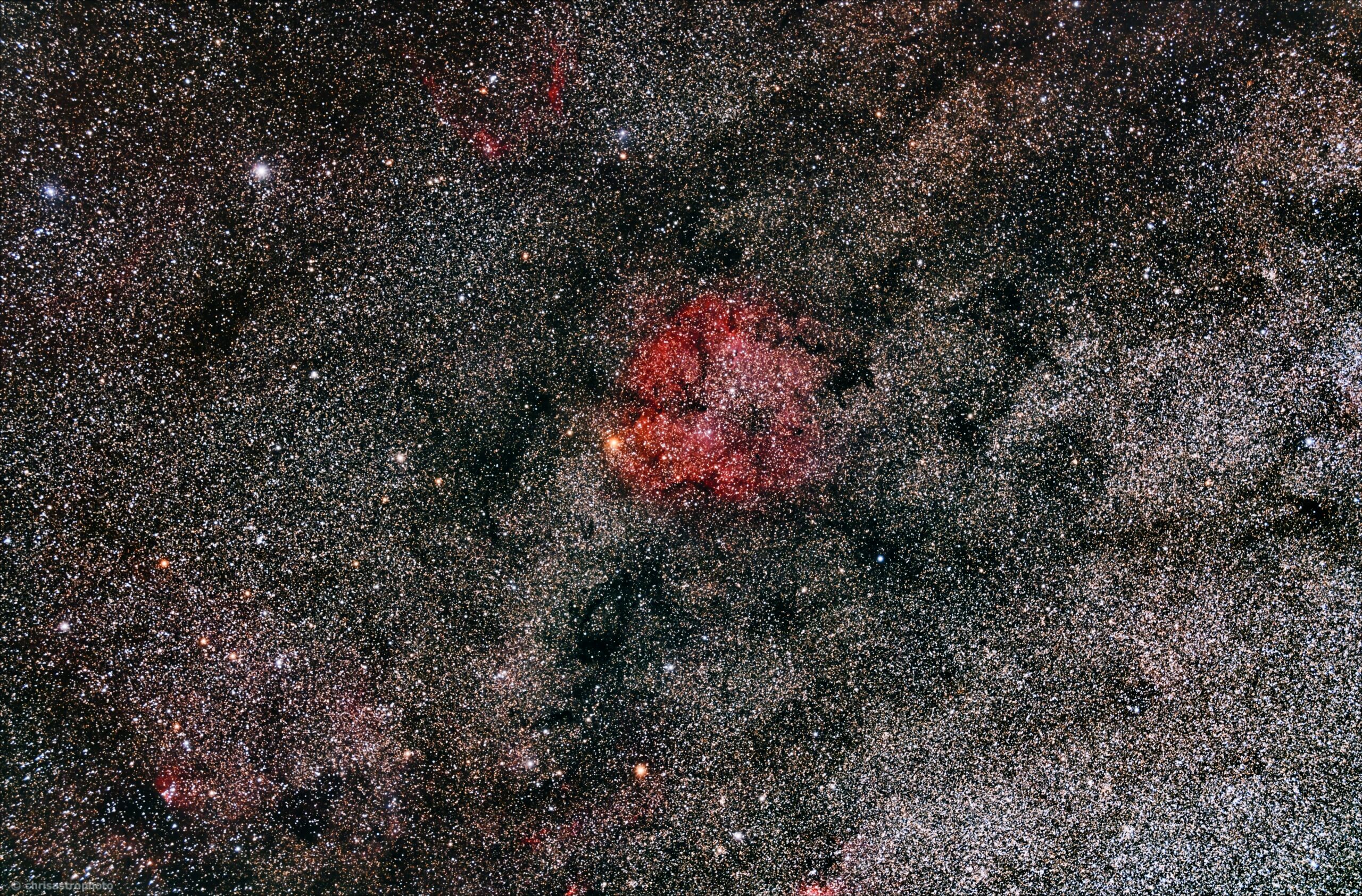 Emission Nebulae
Emission Nebulae
IC 5070, IC 5067 (Pelican Nebula)
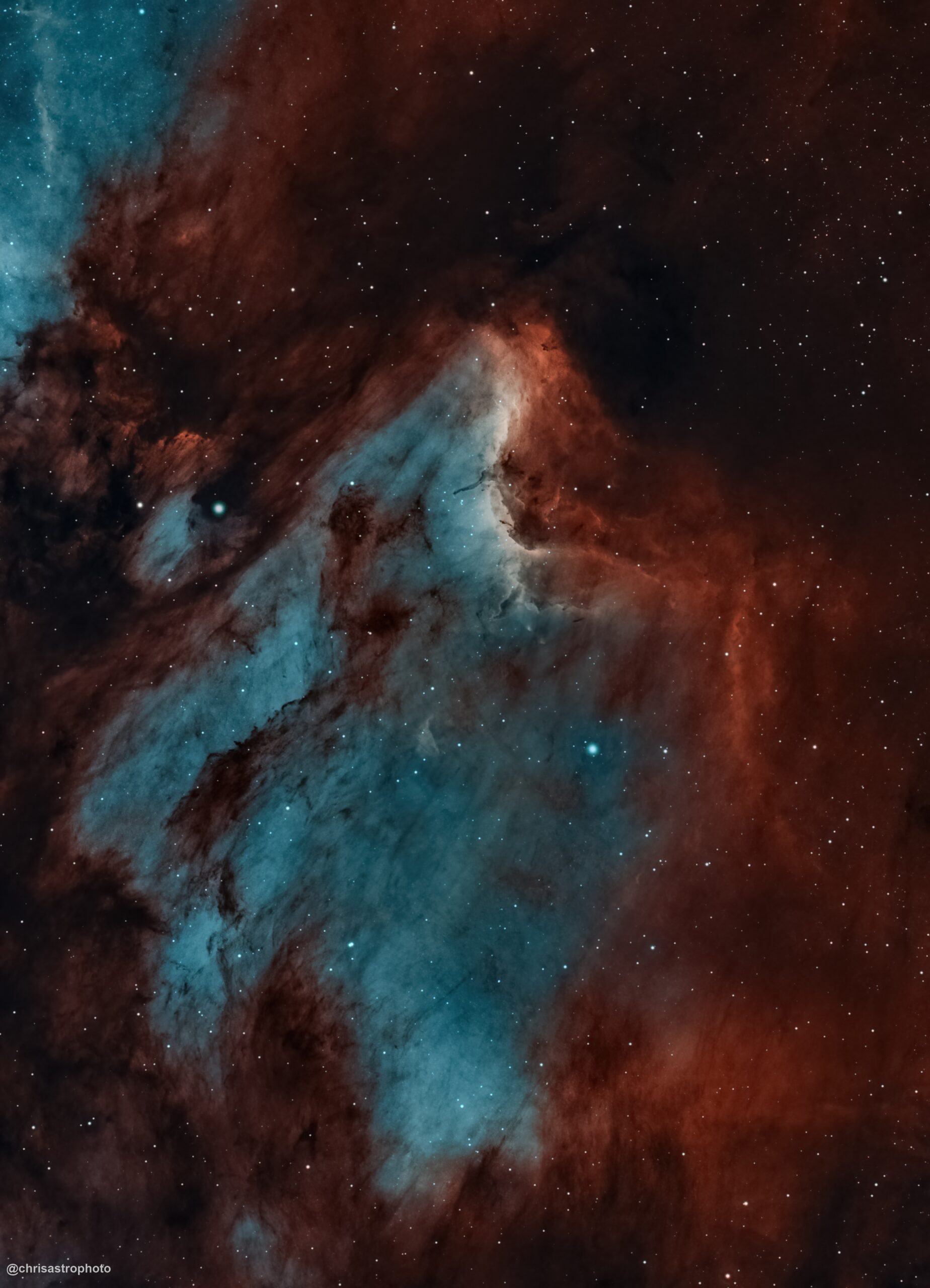
The Pelican Nebula is a combination of hydrogen clouds with dust and molecular clouds in constellation Cygnus. It is associated to the well known North America Nebula (NGC 7000). Both are about 1800 light years away and contain may young stars.
Read more “IC 5070, IC 5067 (Pelican Nebula)”